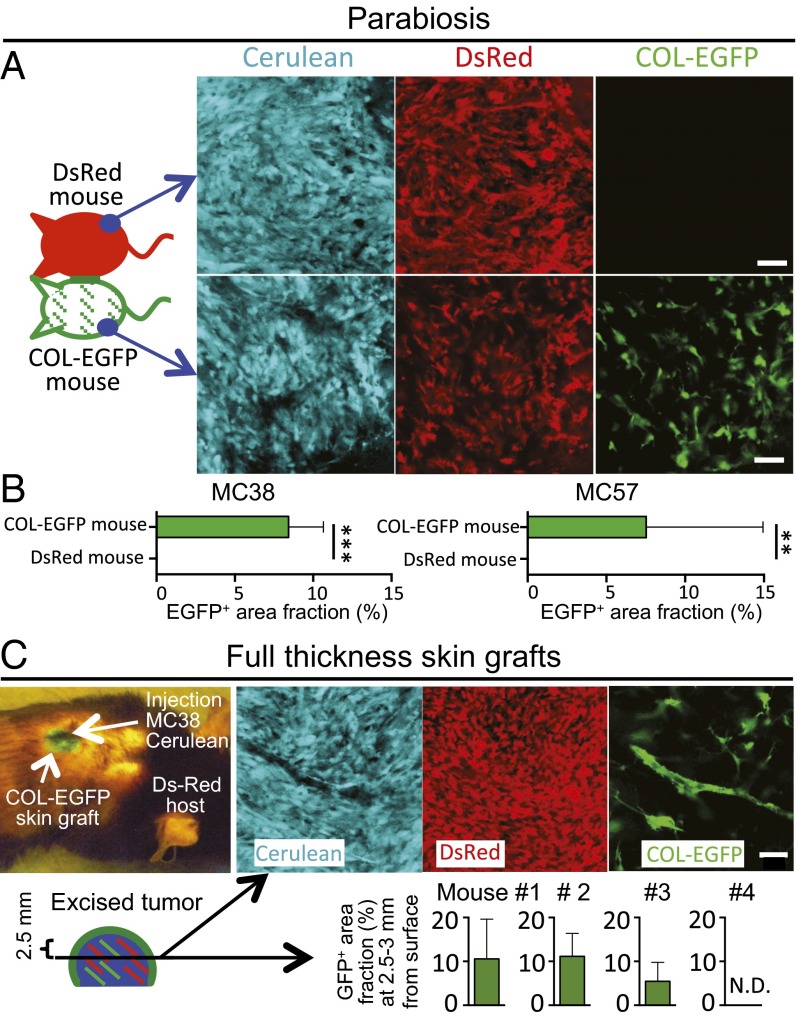Fig. 3.
TAFs derive predominantly from local sessile precursors. (A) Parabiotic pairs of mice were created where only one mouse expressed COL-EGFP and the other mouse expressed DsRed ubiquitously. Two pairs were created: pair 1 contained immunocompetent mice with MC38-Cerulean tumors; pair 2 had MC57-Cerulean tumors in Rag−/− mice. On each mouse of the parabiotic pairs, cancer cells were injected into the distal flank. (A) Representative images are shown from the freshly explanted MC57 tumors from pair 2 at week 3 of tumor growth (n = 6–9 areas per tumor; mean and SD). (B) Quantification of the EGFP+ area fraction (mean and SD) in the tumors from parabiosed mice. **P = 0.0022, ***P = 0.001. (C) Full-thickness skin grafts from COL-EGFP mice were transplanted into four DsRed Rag−/− mice. One month later, MC38-Cerulean cancer cells were injected s.c. into the center of the green skin grafts with the help of a UV lamp. At day 12 (mouse 1) or 25 (mice 2–4) of tumor growth, mice were killed and 1- to 2-mm-thick slices were cut from freshly explanted tumors at a distance of 2.5–3 mm from the surface. The area fraction occupied by COL-EGFP+ cells was quantified in 4–17 optical regions per mouse (mean and SD). A second experiment in which cancer cells were injected 2 mo after skin graft transplantation gave similar results (n = 3 mice). N.D., nondetectable. (Scale bars, 50 μm.)

